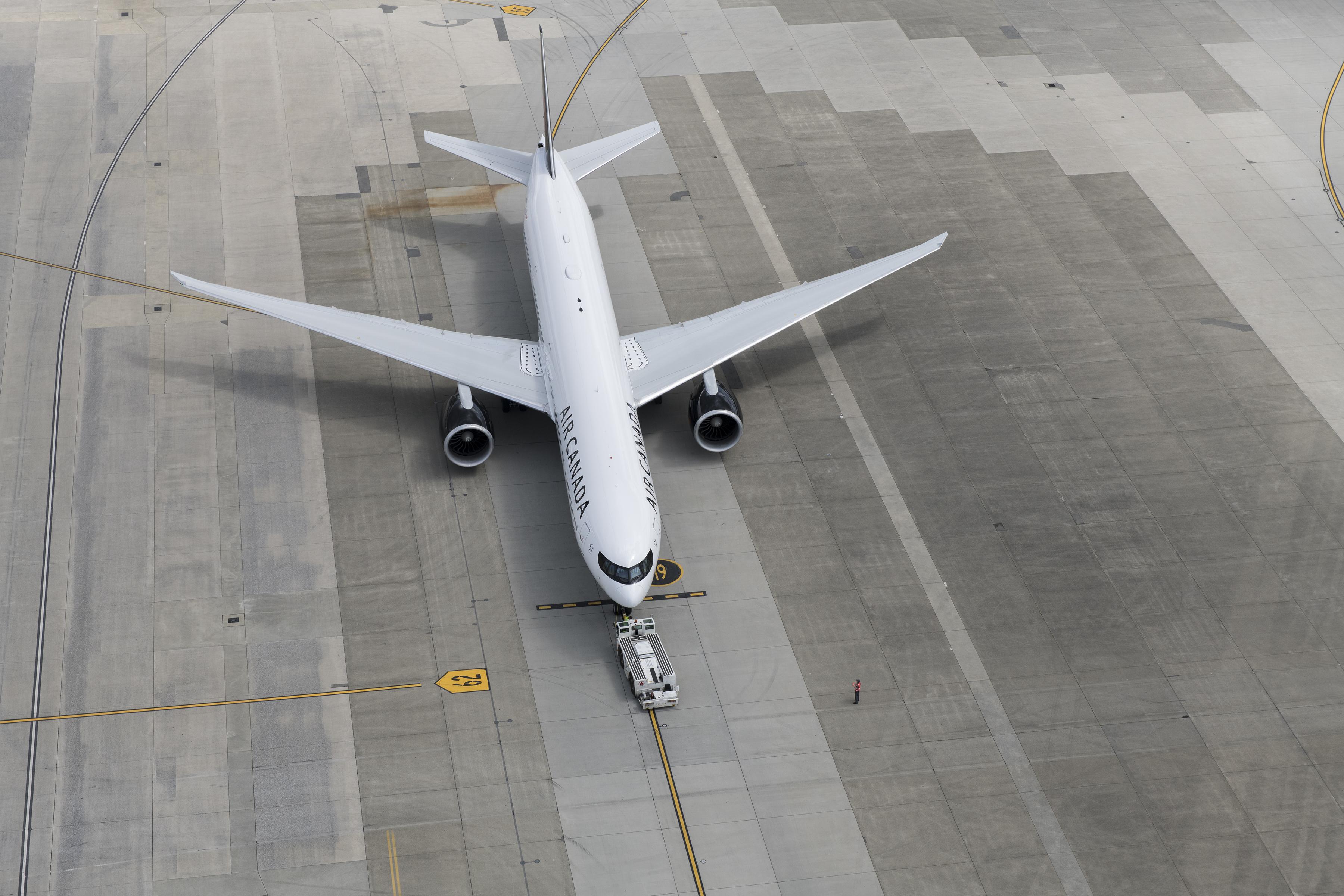
Air Canada CEO Calin Rovinescu is pushing the Canadian government to rethink COVID-19-related travel restrictions, calling the current protocols “disproportionate” and “stifling.”
“This is a total cold shower on building any kind of aviation business,” he told an Aviation Week Network webinar on June 11.
Still, Rovinescu does think a “reasonable amount of business” could be operated by this year’s third quarter.
“Our expectation for the third quarter is to do 25% of what we did last year” in terms of carrying passengers, he said. “But that assumes we would have access to markets.” Demand for air travel is meaningless if hard travel restrictions remain in place in Canada, he said.
As things stand, the Canadian government has advised citizens “to avoid all travel.” The blanket restrictions on travel mean even visits to friends and family are off limits. “People want to travel,” Rovinescu said. But passenger services “for us are still shut down,” he said, noting the contrast to other countries, including the U.S., where air travel has restarted. “We are burning through C$22 million [$16.4 million] a day even after some serious mitigation” because expensive assets are sitting idle, he said.
Air Canada has not received any financial assistance from the government to help it contend with the COVID-19 pandemic and has laid off 20,000 employees. Rovinescu has declared the airline is in a “state of hibernation” and is worried the government does not understand how air travel works.
“Restarting the aviation industry is not like reopening a pizzeria,” he said, explaining the carrier cannot just push a button and start up passenger flying again. Both the federal Canadian government and provincial governments need to start easing travel restrictions so the airline can begin to build back its business by the autumn, he said.
According to Rovinescu, Air Canada entered the COVID-19 pandemic period with a strong balance sheet, and ultimately will survive. “But it is a minimum of three years to get back to 2019 levels” of traffic and revenue, he declared. “This is not a V-shaped recovery in the aviation world. . . . Yes, our expectation is we will be around for a long time to come.”
Rovinescu said he is “somewhat envious” of other major global carriers that have received government subsidies. But he noted that “some of these loans have strings attached. . . . Some of these strings attached are not something we’d want.”
While Air Canada’s passenger business is moribund, the airline has converted four Boeing 777-300ERs and three Airbus A330-300s into all-cargo aircraft by removing passenger seats, and is also utilizing Boeing 787s for cargo flying. “This has been one of the very bright lights in a sea of bad news,” Rovinescu added. “The cargo operation has been phenomenal. We’ve now operated more than 1,500 cargo-only flights since March.”
Photo credit: Air Canada





